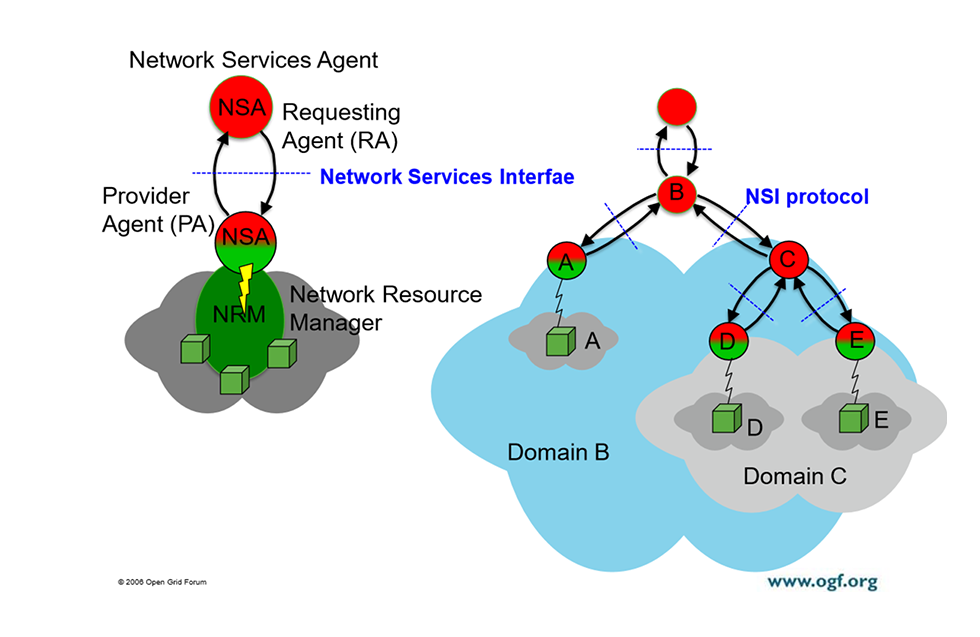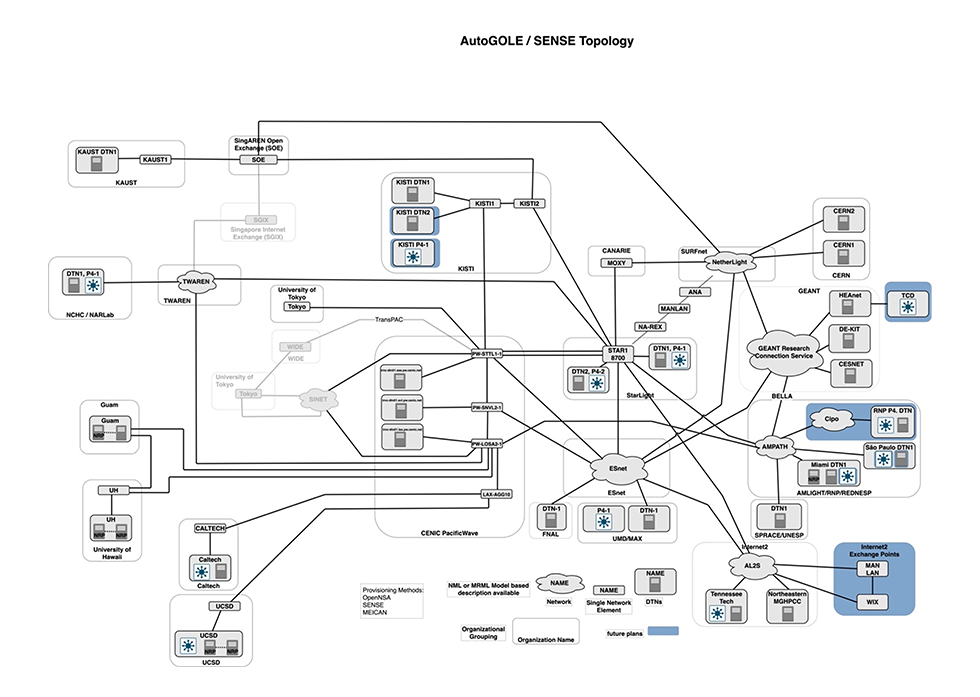NSI Overview:
The Network Service Interface (NSI) is a standardized framework developed by the Open Grid Forum in collaboration with the global research and education (R&E) community. It addresses interoperability challenges in existing network services, enabling seamless interaction across different networks on a global scale. The first NSI protocol, Connection Service (NSI-CS), provisions dynamic network circuits in multi-domain environments.
The NSI architecture includes:
- Network Service Domain
- Connection
- Topology
- Service Termination Points (STPs)
- Service Demarcation Points (SDPs)
- Network Service Agent
- Network Resource Manager
NSI framework (image credit: OGF)
NSI Framework:
The NSI protocol facilitates inter-domain services and requires a Network Resource Manager (NRM) for intra-domain operations, enabling on-demand dynamic resource allocation. NSI standardizes the process of circuit provisioning, eliminating interoperability issues between networks.
Key Elements:
- Network Service Domain: A logical network connecting STPs and SDPs within a domain
- Connection: Path between STPs, supporting end-to-end communication within or across domains.
- Topology: Arrangement of STPs and SDPs in various structures, such as tree or chain configurations.
- Service Termination Points (STPs): Points where data enters or exits an NSI domain.
- Service Demarcation Points (SDPs): Connect STPs from different networks, forming cross-domain links.
SENSE (Software-Defined Network for End-to-end Networked Science at Exascale)
SENSE enables multi-domain orchestration of network and cyberinfrastructure resources, integrating beyond-network elements such as compute, storage, and Data Transfer Nodes (DTNs). It employs an ontological model, Site and Network Resource Managers, and an Orchestrator
AutoGOLE
The Global Network Advancement Group (GNA-G) AutoGOLE is a global collaboration of Open eXchange Points and R&E networks that delivers fully automated end-to-end network services via the NSI Connection Service (NSI-CS). International network services are provisioned in minutes, significantly reducing manual intervention.
AutoGOLE/SENSE Infrastructure:
The AutoGOLE/SENSE infrastructure integrates various tools for provisioning, including:
- OpenNSA: NSI-based client tool.
- SURF Ultimate Provider Agent (SuPA): NSI provider agent implementation.
- MEICAN: GUI enabling multi-domain collaboration by NOCs.
- SENSE: Model-based orchestration system for integrating network and end-system resources into a unified provisioning environment.
This infrastructure is designed to support the Research and Education (R&E) community with automated, end-to-end dynamic network services, significantly enhancing domain-specific science workflows.
Status of AutoGOLE/SENSE Topology (Diagram by Tom Lehman ESnet)

